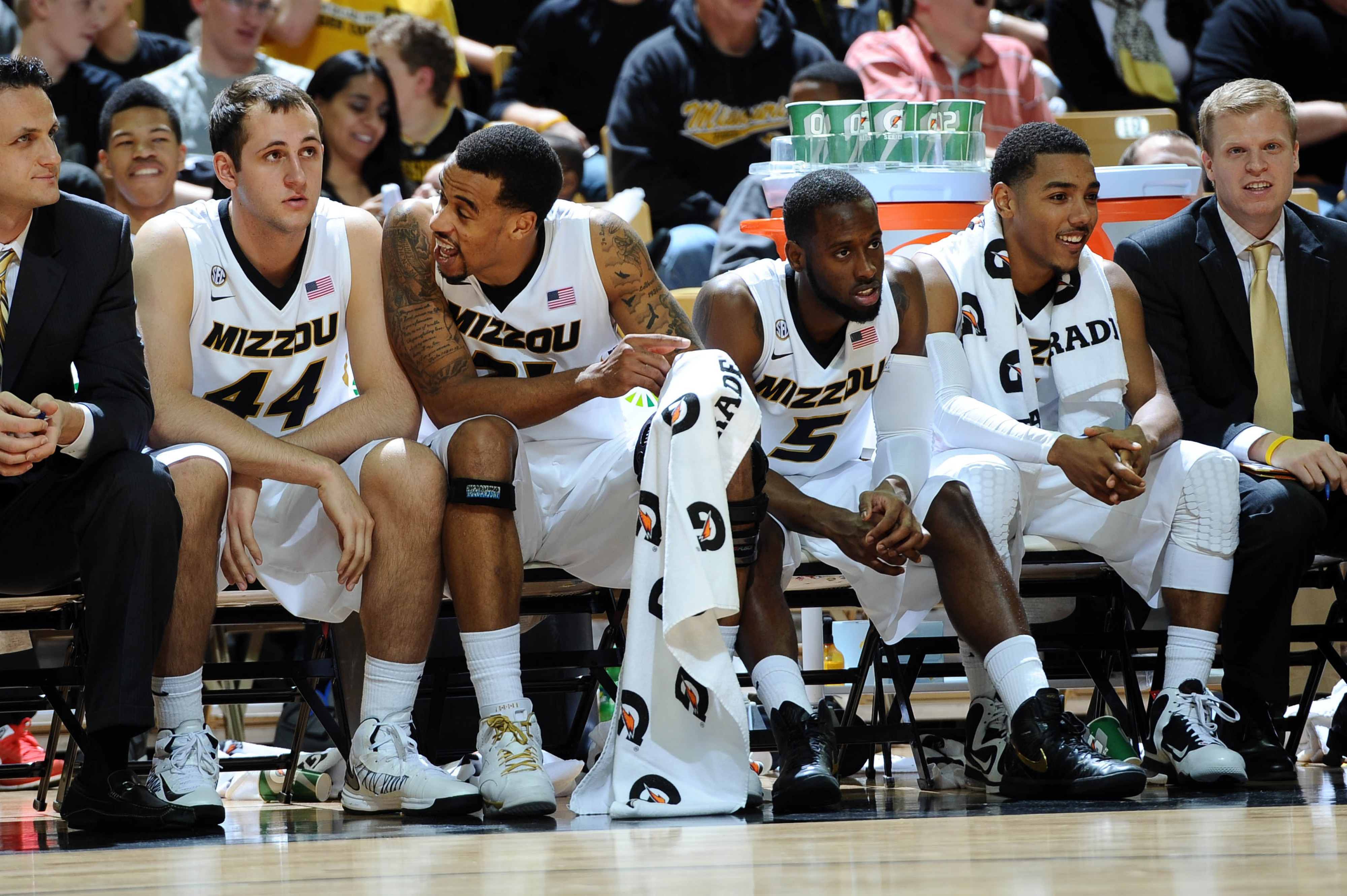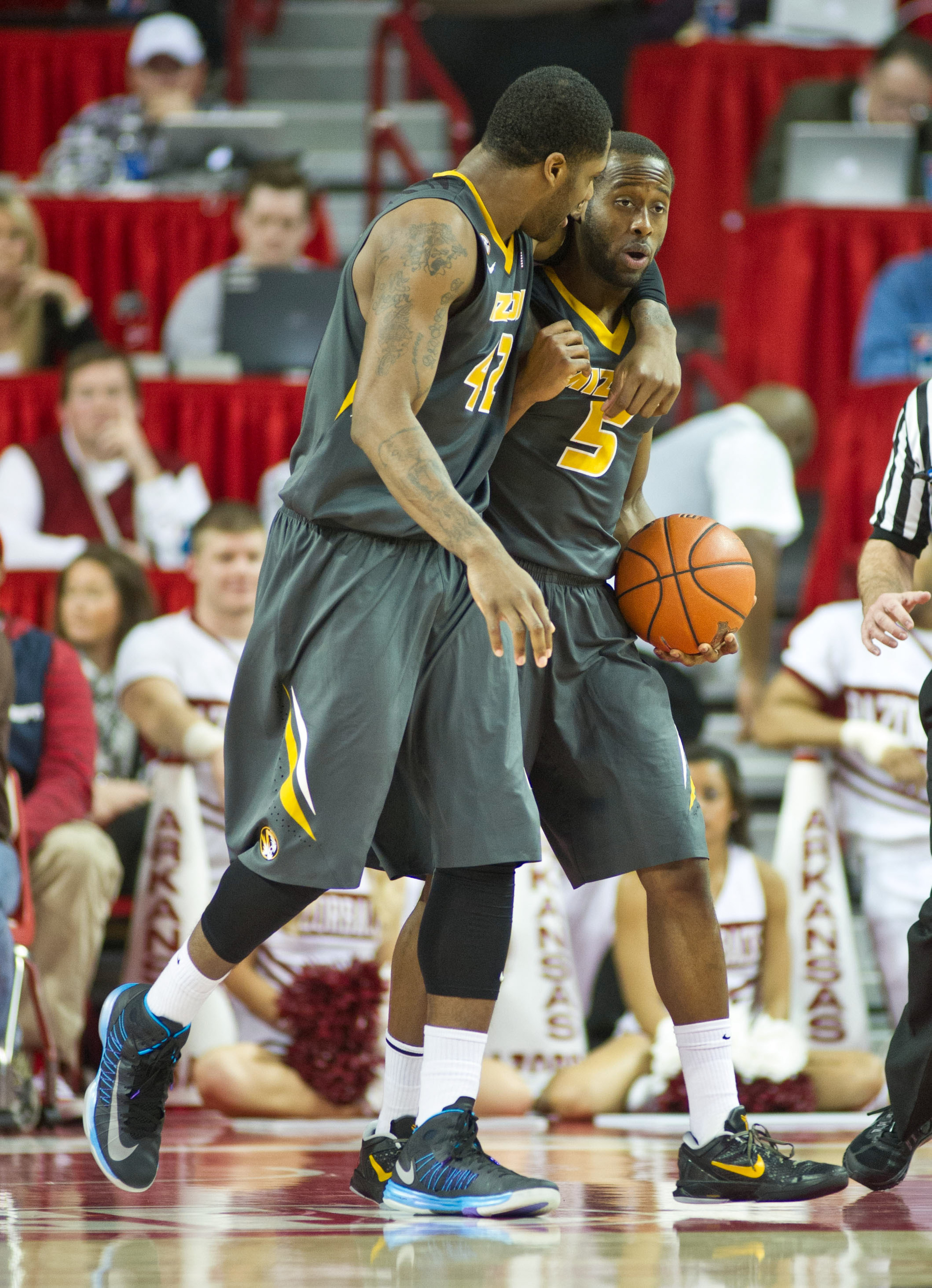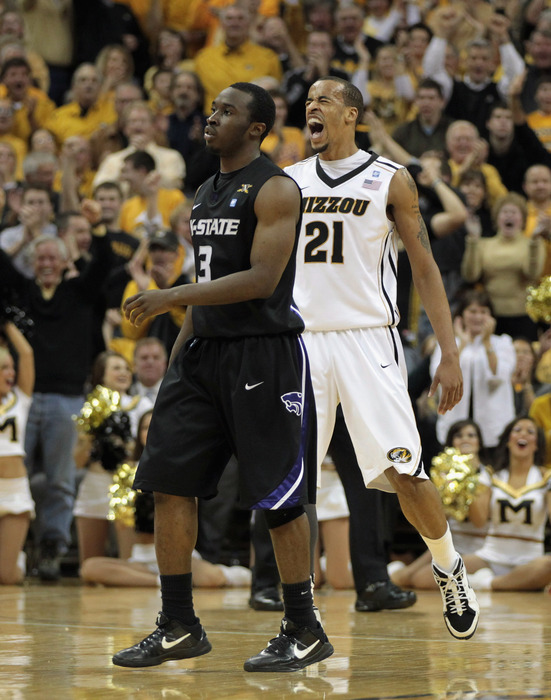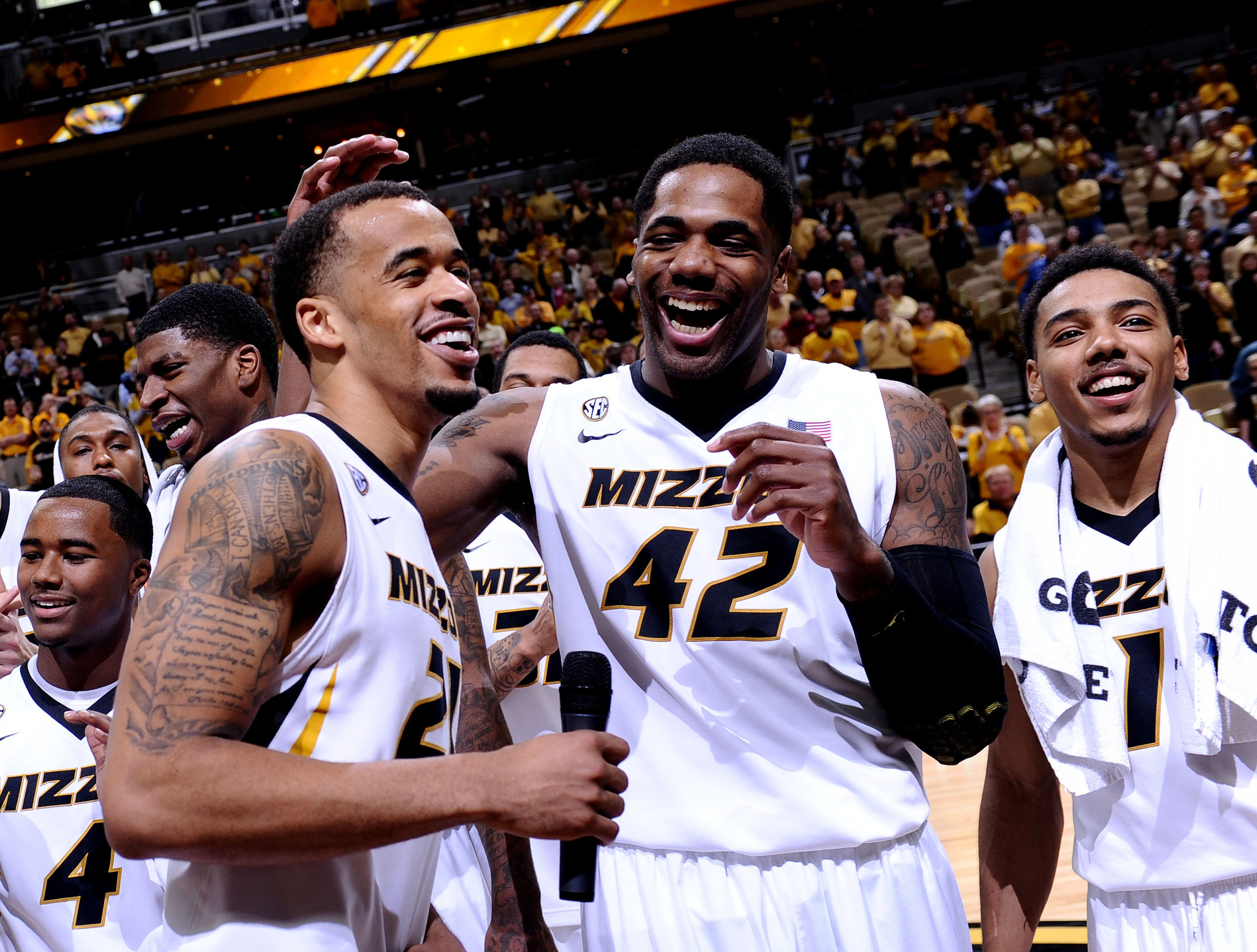![20121129_ajl_sv7_224]()
In his comments following Tennessee's NCAA Tournament snub, Vols head coach Cuonzo Martin was both very right and very wrong.
Now, head coaches are partially politicians, so we don't know how much of this Martin actually believes and how much of this was simply him sticking up for his players. But let's take him at face value.
After about 20 years of trying to guess all 64/65/68 teams correctly, I finally did it this year. That was partially luck, of course, but it was also because I changed the way I go about making my picks. I looked at 10 years' worth of Selection Committee criteria (RPI, road/neutral wins, good wins, bad losses, etc.), along with a general quality rating (the Ken Pomeroy rankings) to see what seemed to make the most difference to the Selection Committee. I then weighted each piece of information accordingly, ranked all of the D1 teams, and correctly chose the 37 at-large bid recipients.
Here was the weighting that ended up getting the bids correct:
- Win Percentage Rank: 2x
- Overall RPI Rank: 4x
Non-Conference RPI Rank: 1x
Conference RPI Rank: 1x
(I broke them out just in case the committee was particularly judging a team by its non-conference schedule, and I used Non-Conference RPI instead of simple strength-of-schedule so that it would still incorporate a team's wins and losses a bit.) - Road/Neutral Wins Rank (road win = 1.0, neutral-court win = 0.5): 0.1x
- Wins Versus RPI Top 50 (win versus Top 25 = 1.0, win versus No. 26-50 = 0.5): 3x
- Losses to Teams Outside of RPI Top 100 (loss to No. 101-200 = 0.5, loss to No. 201+ or non-Division I = 1.0): 0.5
- Pomeroy Rankings: 3x
What this suggests is that, whether the committee realizes it or not, it is putting much more weight into big wins than big losses and much more weight into overall schedule strength than to where potential wins take place (i.e. home versus neutral versus road). This was not an incredibly scientific process on my part, but it did shine a light into the committee's mentality.
In the end, Tennessee failed to make the field because the Vols weren't good enough, for long enough. Yes, scheduling can matter; RPI still plays a heavy role (whether we want it to or not), and a tough schedule gives you more opportunities for big wins. But your performance against your chosen schedule still matters more. The same goes for both the other SEC teams that narrowly missed the Field of 68 (Kentucky, Alabama) and for the Marylands and Virginias of the world. Play well for most or all of the season, and you'll be in no matter who you play (at least, as long as you're a major-, or high mid-major conference team). Experience some ups and downs, or in Tennessee's case, play at a level that has you ranked as low as 102nd in Pomeroy's rankings as late as mid-February, and you're going to put your fate into the hands of a committee that is weighing quite a few different factors and making a lot of apples-to-oranges (Tennessee vs La Salle, for instance) comparisons.
That said, Martin was on to one thing: Who you play does indeed matter. Your strength of schedule can impact your selection a little, but as it turns out, S.O.S. can severely impact your actual performance in the NCAA Tournament.
What Goes Into Overachieving and Underachieving?
In looking back through 10 years of Tournament data, I not only looked at the characteristics that went into selection and seeding, but also performance in the tournament itself. To do so, I looked at what I'll call Net Wins. That's the number of games a team won in the tournament (play-in games excluded) compared to the wins expected from the team's seed.
| Tourney Seed | Expected Wins in Tourney
|
| 1 | 3.4 |
| 2 | 2.4 |
| 3 | 2.1 |
| 4 | 1.4 |
| 5 | 1.2 |
| 6 | 0.9 |
| 7 | 0.9 |
| 8 | 0.7 |
| 9 | 0.5 |
| 10 | 0.6 |
| 11 | 0.6 |
| 12 | 0.5 |
| 13 | 0.3 |
| 14 | 0.1 |
| 15 | 0.1 |
| 16 | 0.0 |
So basically, as a No. 1 seed you have to reach the Final Four to end up with a positive Net Win total. Meanwhile, if you are lower than a No. 5 seed, simply winning a game puts you into the correct side of the ledger.
By breaking these seeds into clusters with reasonably similar expected win totals -- 1-3 seeds (2.1 to 3.4 wins), 4-7 seeds (0.9 to 1.4), 8-12 seeds (0.5 to 0.7), 13-16 seeds (0.0 to 0.3) -- we can, in theory, look at the general characteristics of teams that tend to overachieve or underachieve come tourney time. And two themes emerged time and again: Your seasoning and balance dictate your fate. In every cluster, a team's non-conference strength of schedule and its offensive-defensive balance played a larger role than I anticipated.
Top Seeds (No. 1-3)
From 2003-12, 29 "top seeds" ended up with minus-1.4 Net Wins or worse in the NCAA Tournament. That means No. 1 seeds losing in the Round of 32, No. 2 seeds losing in the Round of 32 or 64, and No. 3 seeds losing in the Round of 64. Of these 29 teams...
...20 ranked worse than 70th in non-conference strength of schedule. This isn't an incredibly high bar, but the losing teams rarely cleared it.
2013 teams impacted: Kansas (81st), Louisville (92nd), Marquette (135th), Michigan State (153rd), Ohio State (270th), Georgetown (284th), Indiana (286th).
...17 ranked worse than 10th in defensive efficiency. Teams with elite seeds are expected to play elite ball on both sides of the court. Those with a certain weakness could get exposed pretty early on.
2013 teams impacted: Gonzaga (13th), New Mexico (14th), Miami (18th), Indiana (20th), Duke (26th), Marquette (50th).
...15 ranked worse than 10th in offensive efficiency.
2013 teams impacted: Ohio State (14th), Louisville (15th), Marquette (18th), Michigan State (23rd), Kansas (24th), Miami (27th), New Mexico (49th), Georgetown (62nd).
... 15 had a difference of at least 20 spots between their offensive and defensive rankings. Now, at this top level, this is a bit repetitive. If you are not elite on both sides of the ball, you're going to show up on these lists twice. But this category shows up in every area of the bracket, which is very, very interesting.
2013 teams impacted: Duke (fourth on offense, 26th on defense), Marquette (18th on offense, 50th on defense), New Mexico (49th on offense, 14th on defense), Georgetown (62nd on offense, fourth on defense).
Most Red Flags: Marquette (4), Georgetown (3), New Mexico (3).
Fewest Red Flags: Florida (0), Gonzaga (1).
Marquette was quite easily the shakiest selection among the top 12 teams, and it shows here
Marquette was quite easily the shakiest selection among the top 12 teams, and it shows here. With three salty mid-majors in their Lexington draw, the Warriors will be a bit lucky to reach the second week of the tournament. Georgetown, however, is a bit of a surprise here. Despite Otto Porter, Jr., the Hoyas really aren't that good on the offensive side of the court. Their defense is fantastic, but over the course of a few games against good teams, the odds are good that some opponent will get hot. Can the Hoyas match?
High-Middle Seeds (No. 4-7)
Twenty-four "high-middle seeds" ended up with minus-1.2 net wins or worse in this same 10-year sample. That, of course, means only 4-5 seeds are eligible here, but it is difficult to be considered an underachiever as a No. 6 or No. 7 seed no matter what you do. Sixes only beat 11s 63 percent of the time, while sevens beat 10s 60 percent. Of these 24 four- or five-seeds...
...16 ranked worse than 20th in defensive efficiency. The correlation between underachieving and defense was quite a bit stronger than with offense.
2013 teams impacted: Syracuse (23rd), Minnesota (25th), Arizona (37th), VCU (44th), Illinois (49th), Butler (53rd), Michigan (57th), Kansas State (63rd), UCLA (64th), Creighton (78th), Notre Dame (90th).
...17 ranked worse than 70th in non-conference strength of schedule.
2013 teams impacted: All 16. At 75th, Butler was the only team in the Top 100. That's awful.
...16 had a difference of at least 25 spots between their offensive and defensive rankings.
2013 teams impacted: VCU (17th on offense, 44th on defense), Memphis (64th on offense, 25th on defense), Kansas State (21st on offense, 63rd on defense), Wisconsin (47th on offense, third on defense), Saint Louis (55th on offense, eighth on defense), Oklahoma State (57th on offense, 10th on defense), Michigan (second on offense, 57th on defense), San Diego State (76th on offense, 12th on defense), Creighton (sixth on offense, 78th on defense), Notre Dame (12th on offense, 90th on defense), UNLV (92nd on offense, ninth on defense).
Most Red Flags: Kansas State (3), Michigan (3), VCU (3), Memphis (3), Creighton (3), Notre Dame (3)
Fewest Red Flags: None had fewer than 2.
The 4-13 and 5-12 games could be crazy this weekend
We continuously hear about how this year's tournament is "wide open." That's a silly sentiment for a couple of reasons. First, most tournaments are wide-open (two 2-seeds lost in the Round of 64 last year, two of the top eight failed to make the Sweet 16 in 2011 while an 8- and 11-seed made the Final Four, etc.). Second, everybody who says it's wide open is picking the same team to win it all. But while there aren't many red flags among the top 12 teams, the No. 4-7 seeds seem quite vulnerable to upsets, more than normal. The 4-13 and 5-12 games could be crazy this weekend. But then again, they usually are.
Now let's flip the script around. For the low- and low-middle seeds, what potential criteria lead to overachieving?
Low-Middle Seeds (No. 8-12)
From 2003-12, 23 "low-middle seeds" ended up with plus-1.4 net wins or better. That basically means 8-12 seeds reaching the Sweet 16 or better. Of these 23 teams...
...17 ranked better than 75th in non-conference strength of schedule.
2013 teams impacted: Belmont (31st), Colorado (56th).
...17 had a difference of no more than 50 spots between their offensive and defensive efficiency rankings.
2013 teams impacted: North Carolina (32nd on offense, 33rd on defense), Pittsburgh (ninth on offense, 17th on defense), Belmont (42nd on offense, 58th on defense), Minnesota (25th on offense, 42nd on defense), Wichita State (51st on offense, 30th on defense), Missouri (13th on offense, 48th on defense), Ole Miss (29th on offense, 65th on defense), California (86th on offense, 47th on defense).
...18 ranked worse than 75th in Pomeroy's Luck rankings. This makes sense. In a lot of cases, all that separate a 5-seed from an 8-seed, or a 7-seed from an 11-seed are a few tight, potentially unlucky losses (or lucky wins). The average Pomeroy ranking for this year's No. 6 seeds was 35th. The average ranking for the No. 8 seeds was 23rd. The average ranking for the No. 10 seeds was 40th. These teams were all bunched together in terms of quality, and quite often a lower seed is simply an equal team with a worse record. If that record can be attributed to luck, that luck can end come tourney time.
2013 teams impacted: Temple (76th), Colorado (77th), Villanova (123rd), Akron (151st), Belmont (157th), Oklahoma (173rd), Cincinnati (178th), Wichita State (192nd), Colorado State (195th), Ole Miss (203rd), N.C. State (235th), Bucknell (240th), Missouri (251st), Iowa State (268th), Minnesota (269th), Pittsburgh (308th).
Most Encouraging Signs: Belmont (3), Pittsburgh (2), Wichita State (2), Missouri (2), Oklahoma (2), Colorado (2), Minnesota (2), Ole Miss (2)
Fewest Encouraging Signs: Oregon (0), St. Mary's (0)
A lot of teams fit the upset criteria here, just as a lot of No. 4-7 seeds do from the opposite direction. Again, a good portion of the 5-12, 6-11, 7-10, and 8-9 games could be fascinating tossups.
Low Seeds (No. 13-16)
In this 10-year sample, 14 "low seeds" won a tourney game. Of those 14...
...11 ranked worse than 75th in Pomeroy's luck rankings.
2013 teams impacted: Western Kentucky (78th), Northwestern State (79th), Florida Gulf Coast (87th), La Salle (98th), South Dakota State (99th), New Mexico State (103rd), Valparaiso (113th), LIU-Brooklyn (134th), N.C. A&T (138th), Davidson (140th), Harvard (142nd), Boise State (152nd), Southern (233rd), Iona (334th).
...11 had a difference of no more than 70 spots between their offensive and defensive rankings and ranked at least 12th in defensive efficiency.
2013 teams impacted: Florida Gulf Coast (151st on offense, 117th on defense), La Salle (43rd on offense, 84th on defense), New Mexico State (122nd on offense, 72nd on defense), Boise State (28th on offense, 86th on defense), Valparaiso (44th on offense, 105th on defense), Davidson (39th on offense, 103rd on defense).
Two Encouraging Signs: Florida Gulf Coast, La Salle, New Mexico State, Valparaiso, Davidson, Boise State
No Encouraging Signs: Montana, Albany, James Madison, Pacific
One never really wants to predict a first-round upset of a really high seed, but some might be more vulnerable than others.
So what does this mean for the tournament as a whole? Below is a look at the NCAA bracket with the encouraging (bold) and red-flagged teams (red) marked. Click to enlarge.
![]()
The top of the West Region is an absolute knockout, with quite a few teams primed to overachieve. Meanwhile, the roads for both Marquette and Georgetown are laden with landmines. And a Michigan State-Duke battle in the Sweet 16 is a pretty healthy bet.
This data was a bit unexpected. And make no mistake: quality matters above all else. More often than not, a No. 1 seed is going to be both a) a strong team according to the advanced stats and b) successful in the tourney. But if you're looking for the potential overachievers and underachievers, look toward balance and seasoning. If you haven't been tested enough, you could be ripe for an upset. (And if you were tested a lot, you might be ready to pull off an upset.) Cuonzo Martin was right, even if not in quite the way he thought.
Meanwhile, unless both your offense and defense are up to snuff, you are probably going to get tripped up before you expect to. It takes both.
More in College Basketball:
• Printable bracket for March Madness
• Need help filling out your bracket? Check out our predictions
• Jay Bilas breaks down the bracket
• An oral history of Bryce Drew's epic buzzer-beater
• The best NBA draft prospects of March Madness
• Full coverage of March Madness







 Mizzou Basketball Links
Mizzou Basketball Links




























